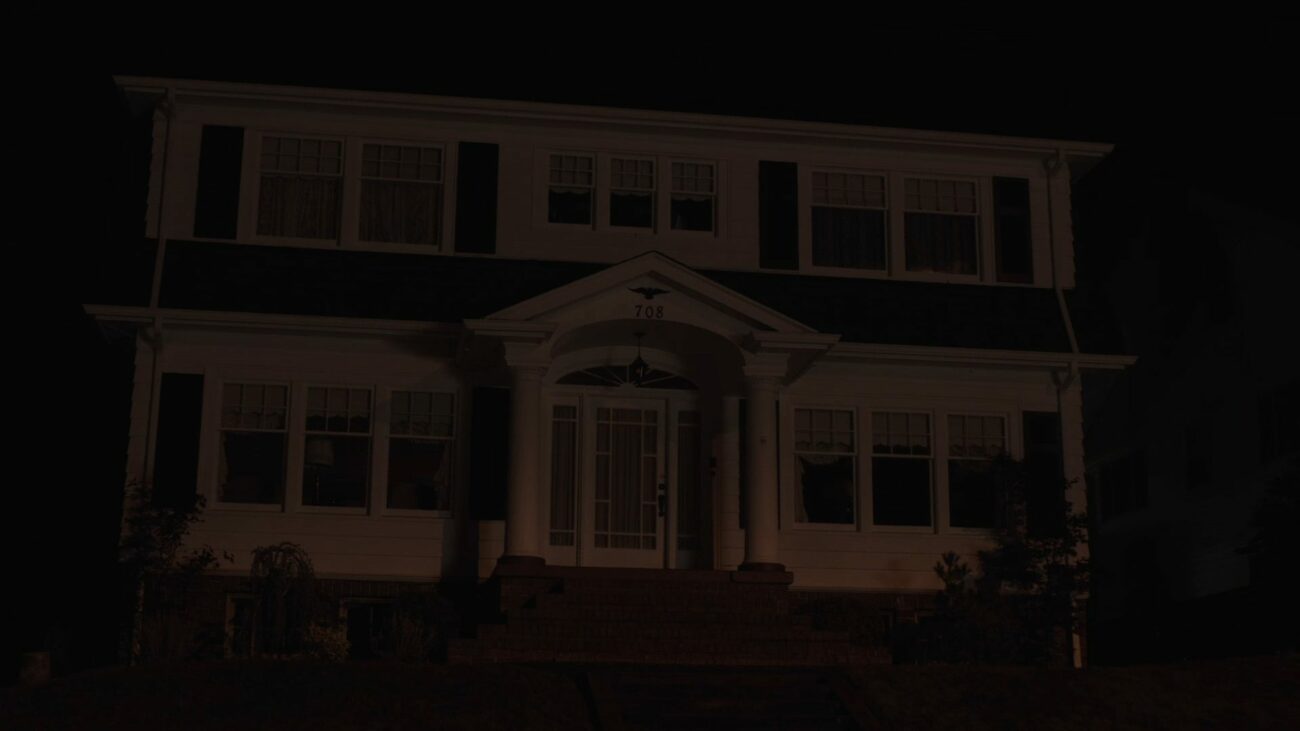Bruce Phillips was at the vanguard of recognizing the magic of Twin Peaks. He got the jump on collecting promotional merchandise, and to grow his own collection he produced a catalog that connected the Twin Peaks fan community from the early 1990s on. A lot of the historical analysis of early Twin Peaks culture and impact focus on how it was the first television series to spark fans to use online message boards. That digital internet revolution was indeed powerful, but Bruce’s analog catalogs have largely been a missing piece in the story of Twin Peaks fandom. Until this interview.
For readers who recall the Twin Peaks Collectables catalogs, you’re going to learn a lot more about the friendly fellow fan who shared his collection and maybe sold you some things during that initial hot popularity of the series. I personally bought an autographed Kyle MacLachlan Agent Cooper trading card and a trucker cap from the 1992 Twin Peaks Fest from Bruce in 1993. For readers who are younger or newer to Twin Peaks, you’ll enjoy this textured account of a fan who helped inspire a fandom that has sustained the love and culture of the series for decades.
Andy Hageman: Thanks for sharing your story with us all, Bruce. In the spirit of weird temporalities of future and past, I thought we could start with a bit about collecting and then back up to hear a little about you.
You bring an amazing perspective to Twin Peaks as THE ultimate collector–you got into Twin Peaks objects early on and you continue to this very moment. I want to invite you to share the insights you have on what we might call the evolution of the merchandise. What strikes you when you think about the official t-shirts, posters, books, and other promotional merch from the early 1990s, the licensed merch used to generate buzz for The Return, and what Showtime has sold in conjunction with The Return since 2017? What’s changed and what’s remained at the core of how Twin Peaks is officially promoted?
Bruce Phillips: Let me first indicate that I make a distinction on collectibles. At that time, there was only limited licensed merchandise, promotional items that weren’t for the general public but for the media, and press information. Some promotional items, such as trading cards, were only available by purchasing certain magazines. Other promotional items were only available by purchasing a certain quantity of the video releases.
Today there are two types of promotional items—those for just the media and then those made for the general public to get fans’ interest that are only available at a convention like Comic Con such as trading cards, tote bags, lanyards, exclusive merchandise, and those from autograph sessions.
Collectibles on the other hand would include anything of interest from wherever it comes from, usually in limited or rare supply, and not available to the general public.
This may be a standard used by other collectors, I don’t know. I just learned to think of things this way in my collecting over 50 years. It’s been helpful to me so that I can classify items and properly describe them for clarification for beginning collectors.
Now, to answer your questions. There was very limited merchandise in the beginning for the original airing of the pilot and Season 1 in the 1990s. A very few t-shirts and books, a mug, and the audio tape Diane were all that were available. ABC/Lynch/Frost had one press kit pamphlet with cast bios, 8×10 photos, and some slides. There was no other promotional material at that time.
When the series started to become popular, magazine articles and interviews appeared; and TV stations’ entertainment programs and talk shows began to air special features, entertainment news, commentaries, featurettes, special guest appearances about Twin Peaks. Advertisements were only in TV Guide and a few magazines.
Some broadcast commercials on the series were aired for upcoming episodes but nothing like today’s advance promotions and merchandise releases.
The next round of collectibles began when the Twin Peaks TV series was aired internationally and then distributed on video. The release of Twin Peaks: Fire Walk With Me (FWWM) movie and later its coming out on video further contributed to more collectible items.
With the world-wide premiere of FWWM, the first festival occurred in Snoqualmie, WA; and festivals carry on to this date but with different sponsors and again making more merchandise and collectibles available.
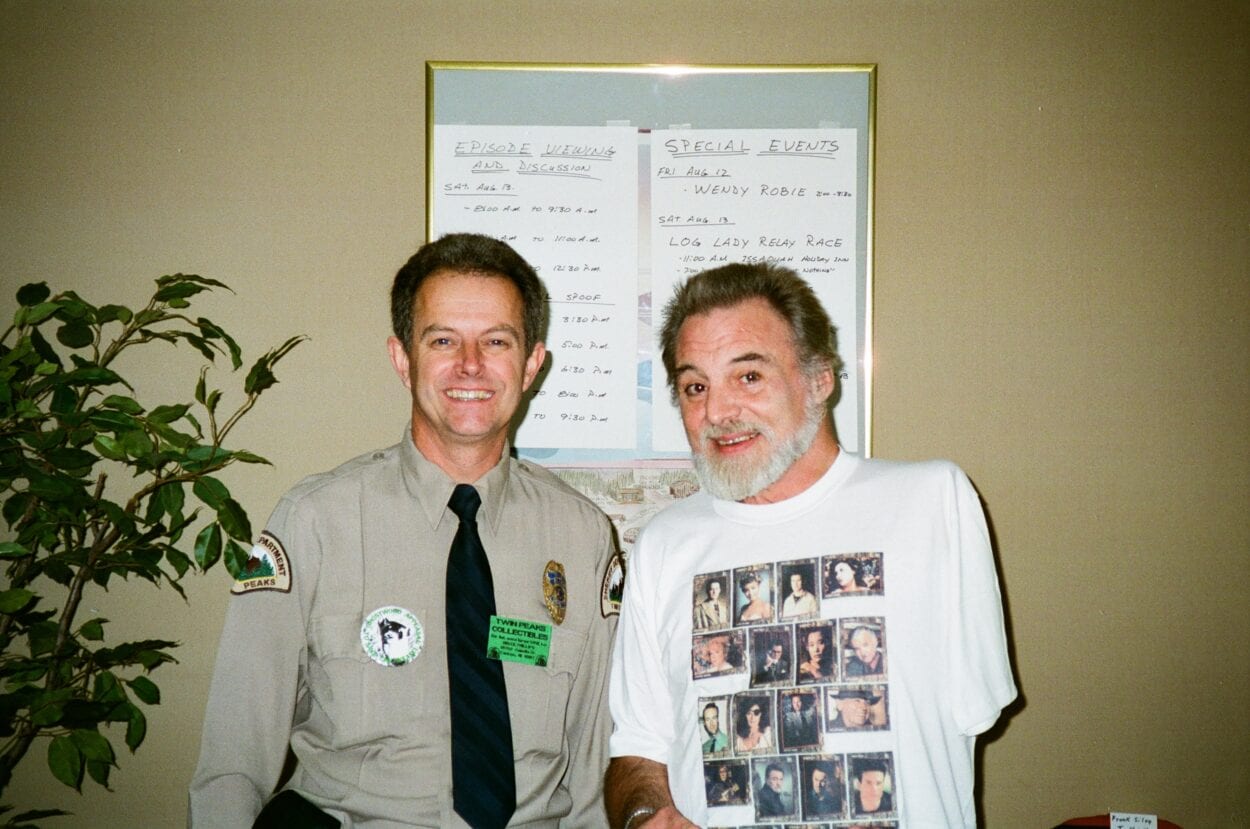
The ensuing phases of new collectible merchandise happened with each special anniversary for the series with the 30th anniversary being this year. By the way, I’m planning on attending the 30th anniversary Twin Peaks Festival being held at Graceland in Nashville, TN. [note: this interview was completed before the event’s cancellation.]
Showtime’s The Return in 2017 brought about a renewed excitement and resurgence to the series to the original fans and a new intrigue for people who had never seen the series. There was a great deal of advance promotional merchandise unlike the original broadcast. A lot of Showtime merchandise and a slew of other suppliers/manufacturers produced an abundance of items. Here it is, years after the airing, and new merchandise is still being released. In fact, just today, August 21, 2020, a new shipment of Twin Peaks 30th anniversary merchandise that was produced for the 2020 Comic Con convention which was cancelled.
My collection includes all licensed merchandise as well as over 80% of collectible, promotional, crew and cast, production, and prop items, and much more resulting in the world’s largest collection; and I still have the largest assortment of Twin Peaks collectibles.
AH: That timeline is really helpful, Bruce. It’s like a seismograph across 25+ years that registers a case study of fan community as well as marketing and promotion evolution. Plus, your experience cuts across evolutionary phases of the media collectors use to connect, share, and buy and sell objects. Pretty fascinating stuff.
Now, let’s back up a bit and hear a little about you before Twin Peaks.
BP: How does an ordinary guy like me become so immersed in what has become one of the most endeared cult TV and movie series of our time and stay with it for over 30 years? Well, I did have another life before Twin Peaks.
I married my high school sweetheart while working on my Bachelors of Fine Arts in commercial photography from The Center of Creative Studies, one of the top art schools in the United States. After receiving my degree, I was employed as a free-lance photo journalist; and did photo advertising for Ford Motor Company, photos for Hallmark Greeting Cards, etc.
Then the recession of the 1980s hit, and one of the first things businesses cut is advertising. At that same time, I was becoming interested in our local politics and was hired by my city. I went on to get my Associates Degree in law enforcement and then pursued my Masters in Public Administration at the University of Michigan while working in local municipalities as a police officer, court officer, and city manager.
During this time, video stores were becoming the rage, and I was offered and jumped at the opportunity of a franchise of one of the area’s largest video organizations, Discount Video. This was obviously the introduction to the world of entertainment collecting providing me connections to purchase more merchandise, promo items, posters, etc. in many areas which I narrowed to Enya; The Avengers; X-Files; and, of course the biggest, Twin Peaks.
While entertainment collecting offered a new diversion, I was still deeply engrossed in my other keen interest, auto restoration, and obtained an Associates Degree in classic auto restoration so as to have professional training for my own auto projects.
However, as video stores were falling out of favor to cable TV, my avocation soon became my vocation leading me to work for two museums. I worked at the Sloan Museum in Flint, MI restoring their vehicles and researching and obtaining archived information requested from classic auto owners. I also worked at the renowned Henry Ford Museum for 15 years where my primary job was restoring and maintaining a fleet of operational vintage vehicles. Some of these vehicles went on loan to other museums around the world, were used for media events, movies, TV shows, and dignitary visits. I just retired from there.
AH: Wow! So, you’re like a whole bunch of the characters of Twin Peaks all rolled into one. That’s a pretty amazing life trajectory for you and yours, and all best wishes in the transition to retirement.
Let’s return to the early days of Twin Peaks collecting. I’ve got two related questions here. First, would you share any memories you have of the former shop called Alpine Blossom in North Bend, Washington? Personally, I fondly recall spending way over my budget there in the summer of 1993, the first time I was fortunate enough to visit the Snoqualmie Valley. And it’s funny, I bought a mountain of t-shirts and proceeded to wear them until they were so faded and holey that I got rid of them; now I see those shirts listed on Ebay and Etsy for like $300.
BP: I also have fond memories of the Alpine Blossom Hallmark Gift Shop across the street from the Twede’s Café, better known as the RR Diner. Every time I attended a festival, I always made time to visit the shop. It was better than finding a gold mine with wonderful Twin Peaks items all in one location, and you did not have to pay for shipping. I would knowingly pack lightly in anticipation of having to take a lot of wonderful items back with me.
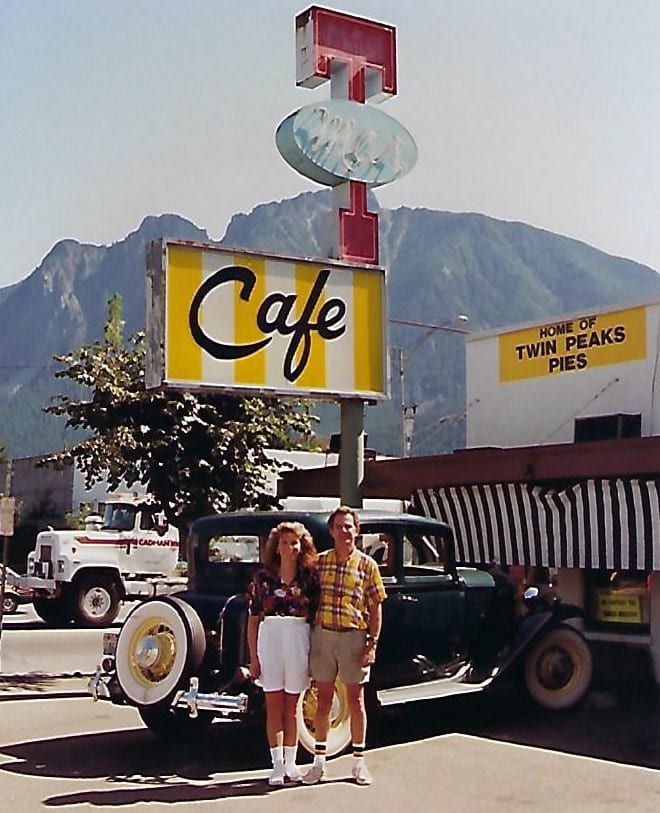
After meeting Joanne Richter, the owner, we did some trading for t-shirts and other items. Then, when I purchased the entire remaining stock of The Secret Diary of Laura Palmer, Twin Peaks Access Guide, The Autobiography of FBI Special Agent Dale Cooper, and Diane the Twin Peaks Tapes of Agent Cooper, the StarPics autographed cards as well as the majority of the trading card sets, she would get her supply from me. She was also a fan, and I always enjoyed speaking with her.
AH: My second question here parallels the one about Alpine Blossom. During my 1993 pilgrimage to North Bend, Snoqualmie, Preston, and Fall City, I recall seeing a lot of local-made Twin Peaks objects. Somewhere in my parents’ house I still have a beautiful mug by a local potter bought in the gift shop at Salish Lodge & Spa. Did you buy any local-made Twin Peaks objects back when they were more prolific due to the initial success of the series? Or, were there any you saw and now wish you’d acquired?
BP: I did pick up a few locally-made items like buttons; bumper stickers; a sparkling wine; post cards of the area; and a couple items from the Salish Lodge (The Great Northern) and the Kiana Lodge, better known as the home of Pete and Catherine Martell where Laura Palmer’s body was found, to add to my personal collection.
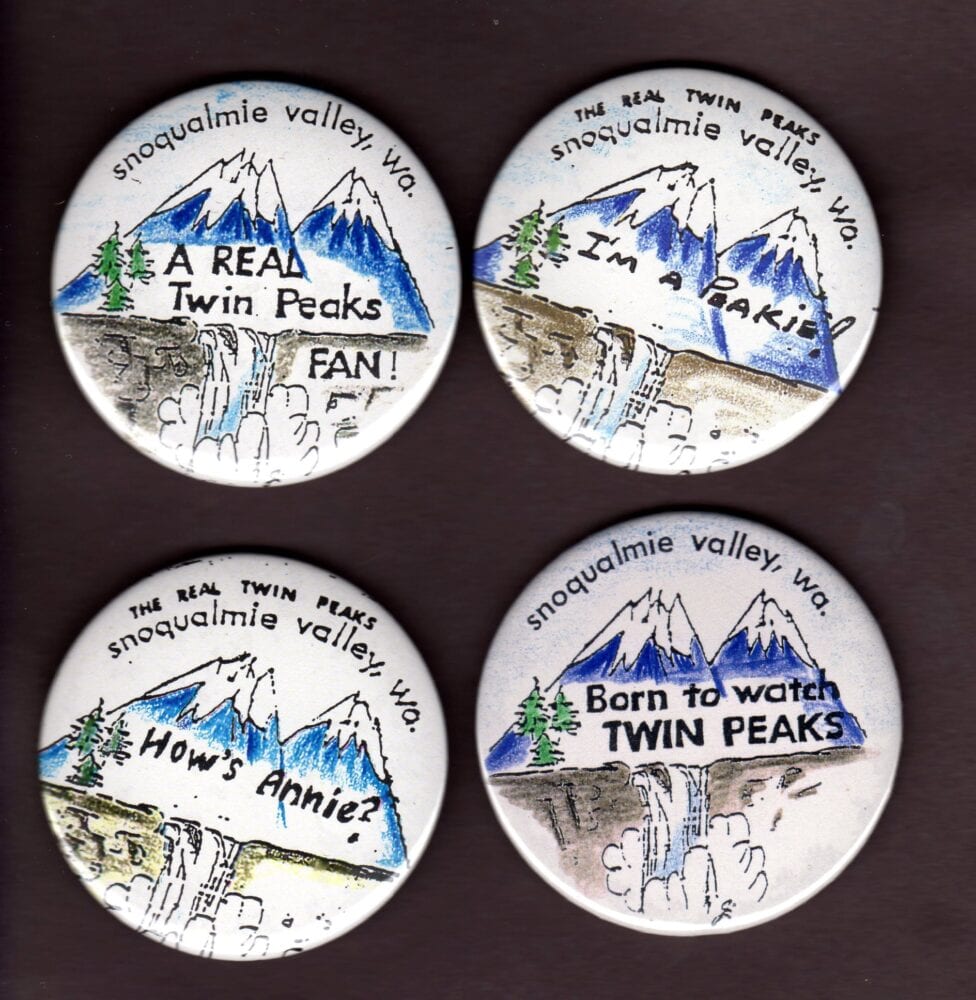
For example, I picked up several single-slide viewers that showed photos of The Great Northern, Packard Saw Mill, the falls, etc. One of the other fun items I did pick up was the label for a can of the Black Lodge Garmonbozia by Bob’s Mfg. Co.
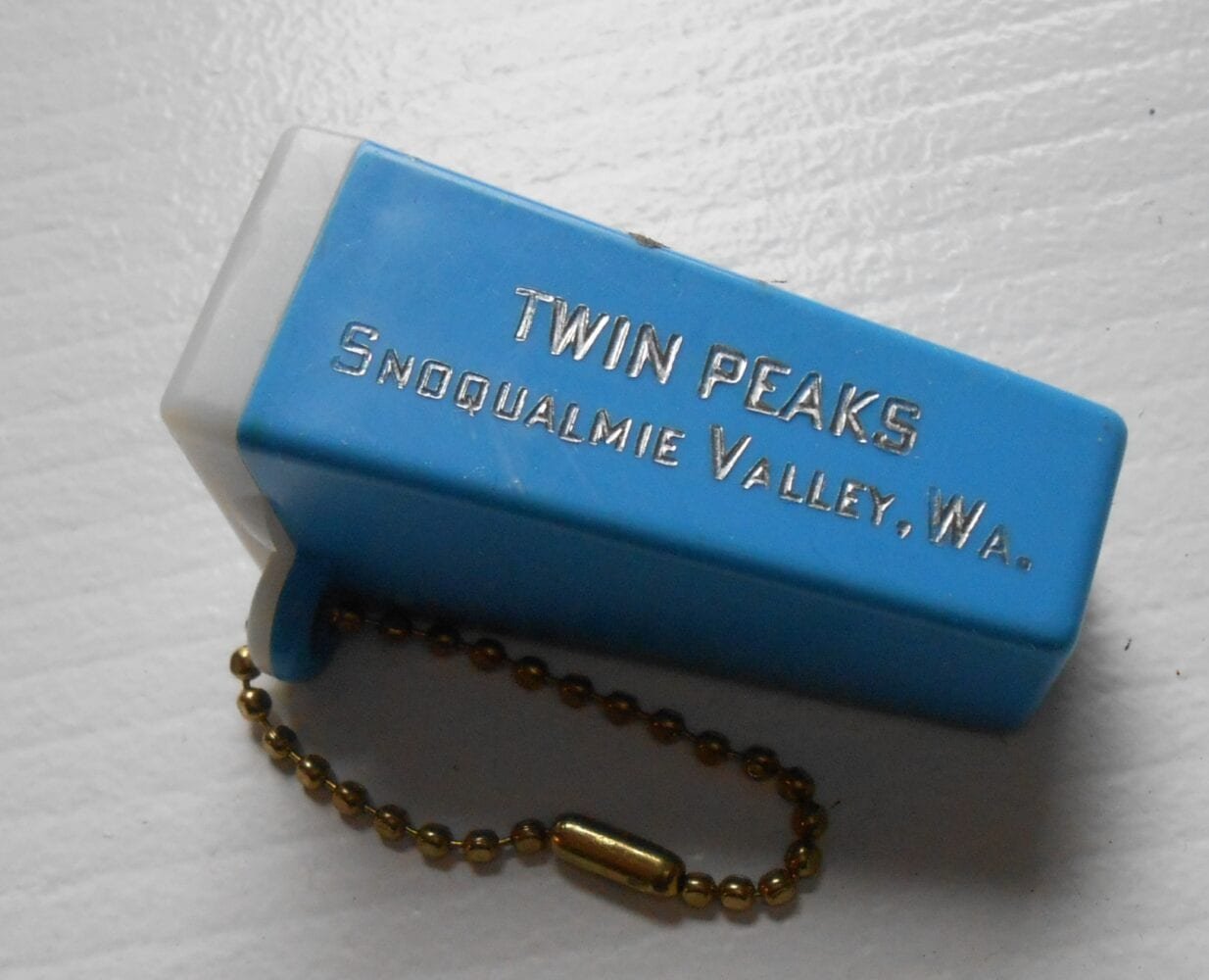 Andy: That’s the first I’ve seen of the single-slide viewers, pretty neat retro media today. In the spirit of that last question, I wonder what’re your thoughts on the relationships between officially licensed Twin Peaks merchandise and non-licensed objects made by fans and entrepreneurs? Please say a bit about how you as a collector/fan and as a collector/dealer feel about these different categories.
Andy: That’s the first I’ve seen of the single-slide viewers, pretty neat retro media today. In the spirit of that last question, I wonder what’re your thoughts on the relationships between officially licensed Twin Peaks merchandise and non-licensed objects made by fans and entrepreneurs? Please say a bit about how you as a collector/fan and as a collector/dealer feel about these different categories.
Bruce: As a fan and collector, I never made a distinction between sources whether licensed or unlicensed, etc. Frankly, I was always looking for items you could not just purchase at a store. Remember, there was no online buying at that time, and I was always happy to share with other fans for their own personal use with no rights implied.
This may have made me fall from favor with some, but most fans wanted and loved these unusual things. No licensee ever approached me requesting I stop selling anything, and I always handled items respectfully and gave credit where credit was applicable.
Some items I have given on loan so others can see them such as TV stations for particular specials, festival events, and museums. I have also received requests, and still do, from authors; magazine publishers; broadcast stations; podcasts; website hosts; producers; and more for some of these items or information and am always happy to help them in their endeavors to bring insight and information about the series. I recall the wonderful conversations I had with Craig Miller, publisher of Wrapped in Plastic. He would routinely call me to find out what new items I had obtained and ask for reference information for upcoming issues.
Only once was I questioned when I placed an order for a magazine from a distributor in another country who said that their magazine was only licensed for distribution in that country. I responded by saying, “Are you telling me you don’t want fans worldwide to read this magazine?” His response was, “Well, if you put it that way, I’ll ship your magazines.”
I actually have items in my personal collection that people don’t know I have as they were given to me for various personal reasons; and I had promised not to disclose my having them, which I will continue to honor. None of these things were obtained illegally.
Questions have been asked of me and posed on various sites as to whether some commercial releases were actually taken from my collection. When I initially obtained much of this material I knew there would be great interest, so I was glad to hear this because had I not saved it they may not have ever been commercially released.
AH: There’s one more thread I want to pick up on regarding early Twin Peaks collecting. I, like a whole swathe of Twin Peaks fans from the early 1990s, came to know your name and mailing address through your Twin Peaks Collectables catalogues. Those catalogues combined a quirky DIY spirit with a meticulous commitment to archiving and organizing your collection. Obviously, those catalogues were an instrument for collectable dealing, but would you say more about what kinds of joy you found in creating and disseminating them? Was part of the joy of collecting for you the inventory and documentation of all these wonderful, weird things? Did these catalogues make you feel connected? Part of a community with some deep affinities? And I’m curious about catalogue circulation: How many were you producing and mailing? What percentage of folks who requested a catalogue do you think ordered something from you?
BP: I started my collecting at first to feed my own enthusiasm for Twin Peaks. As more and more items became available, I realized I needed to find a way to help pay for what I was collecting, so decided to start purchasing multiples of items when available. Now I needed a way to connect with other fans who might be interested in the things I had, so I ran ads in various sci-fi and entertainment magazines not only here but around the world as well as Wrapped in Plastic. I immediately began to interact with other fans from around the world developing their fascination for the extra items I had. Since then, and even to this day, I have been doing something related to Twin Peaks every day, which always makes me feel connected and has brought great satisfaction. I literally have a lot of fun with it all.
I soon realized I was good at searching for and acquiring unusual items. Eventually I decided I needed to document and archive things to reference for future fans. At that time, no one else was doing anything like this. I took pictures and copied everything I found. A lot of it never made it into my catalogs, again, no internet. I still have all my records – some are on old floppy discs, which was the format at that time. Fans started to ask me for specific items that did not make it into my catalogs. Thankfully, I was able to check my records, and in most cases, I had what they were looking for.
I began acquiring everything I could, concentrating on the unusual and hard-to-find. For example, I had the contact information for the prop shops that Lynch/Frost used and bought everything I could. Unfortunately, there were some items just too large to practically ship to Michigan, such as furniture from the Great Northern, Dr. Jacoby’s office door with his name on it, the Victrola record player from Laura Palmer’s house, etc.; however, I did contact fans on the West Coast to let them know about their availability in hopes they would get them.

From my records of things I acquired, I could tell you where every key item went, such as props and very limited promotional and merchandise items. I’m not going to disclose this information for obvious privacy reasons; however, some collectors have already come forward, and you can find them and the items they have on the internet.
I remember that one of my biggest fans and collectors sent his/her entire collection to me due to necessary downsizing and not wanting to sell it off piecemeal over time and making sure it would go to someone who they knew would appreciate it.
I also purchased large collections and then sold items separately, which I continue to do today. Most fans are looking for specific items to add to their existing collections and not interested in purchasing large quantities of items.
It wasn’t long before I amassed a considerable stock of multiple items necessitating my composing a catalog. This was sent to fans who truly showed an interest by sending a self-addressed stamped envelope which I had to do as I was overwhelmed with requests, phone calls, and later emails. My phone never stopped ringing, even throughout the night with international inquiries.
I updated the catalog and mailed it out several times a year but always before Christmas for those wanting to purchase items for gifts. The initial mailing list I compiled from responses to the ads I ran numbered in the hundreds but soon grew to thousands of fans. I was even approached by merchandisers who wanted to purchase my list, but I wouldn’t do, again, for privacy reasons. However, I did offer the opportunity of doing joint mailings where they would send me their advertisements and pay for the shipping. I did this with Star Pics, Bravo, and others. For some I offered to list their items in my catalog which brought me more promotional items and documentation. Eventually other sources sent me their mailing lists; so between those along with my various joint mailings, my list grew to over 6,000.
Fans who initially requested catalogs always purchased something; and then when the updated catalogs came out which included items from before as well as new collectibles, approximately 75% continued to purchase.
As the years went by, my ability to work with Twin Peaks was becoming difficult and new merchandise was not being released. Eventually, I stopped doing the catalog and took down my website. At that time, I was employed full time, working on my masters degree, and helping bring up our young family. But I never lost interest and continued to collect items.
Once Ebay started, I found it easier to begin listing items there. I am now retired and have more time to devote to it and now offer items only on Ebay, which is where fans can now contact me My Ebay ID is brucew412.
AH: Thanks, that fills in a whole story around the catalogs and the energy and work you’ve put into collecting. It’s interesting how you describe the processes a lot like solving mysteries, so it’s a natural fit with Twin Peaks.
You’ve been immersed in Twin Peaks objects for decades. Among the many things you’ve acquired, what are 1-2 things that mean the most to you personally? Please share the stories and explanations behind the value to you as a fan and collector. It’s fascinating to hear about how Twin Peaks folks assign value since it usually has more to do with our relationship to the series than the market value of the objects.
BP: The only things in my private collection are those that have a very special meaning to me. These include gifts of appreciation; thank you letters to me specifically; items autographed to me; and photos from fans, cast and crew members, merchandisers and producers all of which only have a personal value to me.
For example, there was a fan (MC) who wrote me pertaining to scripts I had saying, “In your Dec. 1990 catalog, you are selling many scripts from crew members. Some are listed as rare drafts. My question is did you ever have those in your hands, and did you make copies? For instance, the common script for the final episode is the third draft. Did you have the first draft—it will only say first draft on the cover. I am looking for rare drafts.” I was able to look into my archive information and found – First Draft Feb. 14, 1991 Department Heads Distribution Feb. 25, 1991 Rewrite. I also had a second copy which says the same plus a revised date of Feb. 28, 1991 on blue colored paper. It is a common practice in rewrites to change the color of paper so everyone knows they are working from the current rewrite. This is just an example of some of the detailed kind of information fans requested. I also get requests for scripts with cast members’ personal notes written in the margins which I also have.
I also received a note from Don Davis, Major Briggs, thanking me for sending him a video from one of the Twin Peaks festivals at which he was in attendance.
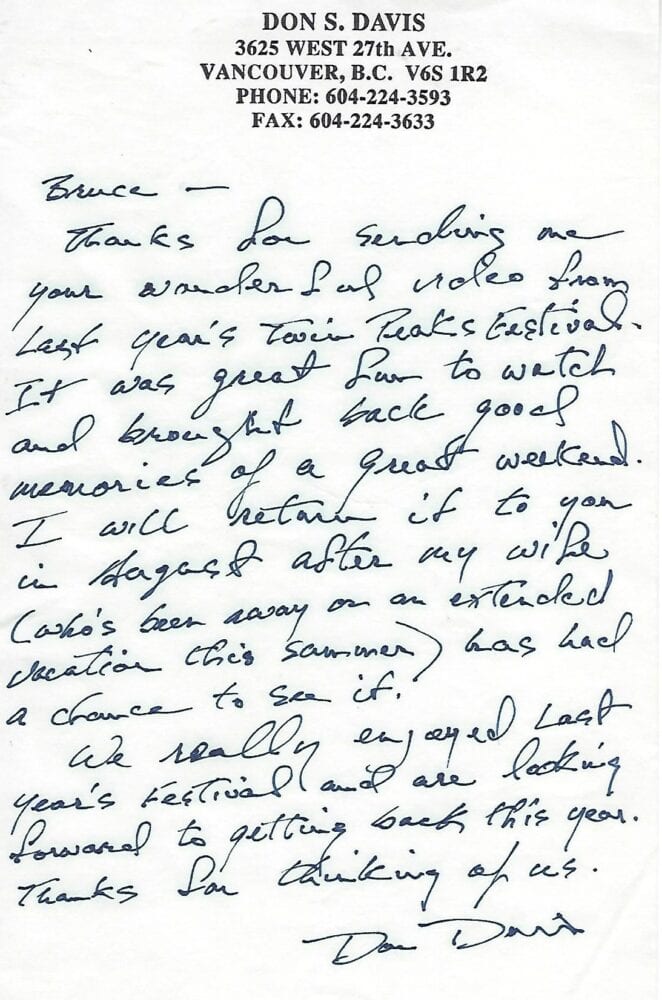
Then just recently (July 2020) I received an email from JA, Executive Producer from NSS (abbreviating as they don’t want the information out): “Today I stumbled on this bit of video from the 1993 Twin Peaks Festival. … would very much like to use the interview in the movie.” The footage requested is actual footage I personally filmed.
And for this interview, I’m sharing some copies of production documentation from my collection that I don’t believe many have seen. One is the art department’s logo for Ben Horne’s Development Corp. Another is from Lynch/Frost Productions, Inc. that was attached to scripts telling cast and crew members, “This script is for your eyes only. Thank you for your cooperation.” There’s also, a copy of the order from Lynch/Frost Property Sales to Modernica, a prop distributor, with a list of requested props.

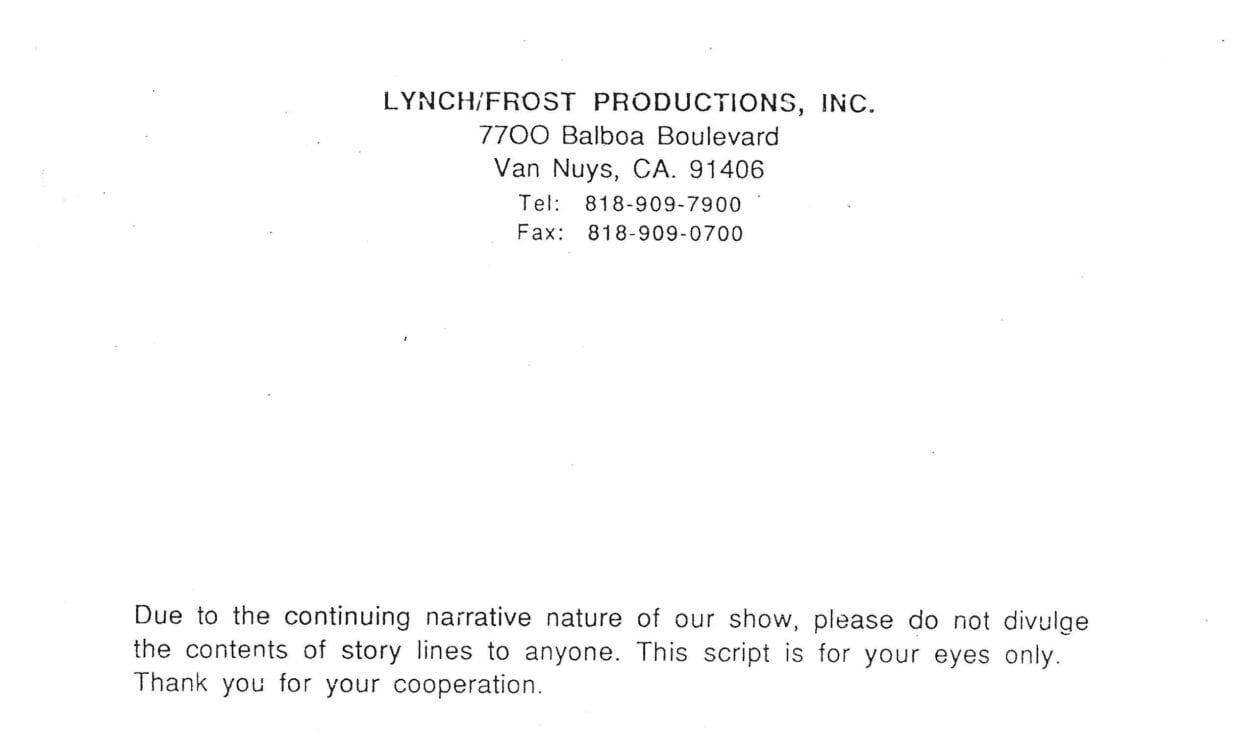 So you can see why I will share some of these items but never sell them.
So you can see why I will share some of these items but never sell them.
AH: You told me that you’ve thought about writing a book on Twin Peaks. I’d love to read that book since you’ve got such a unique and sustained perspective on both the series and its fandom over the years. What would you like to write about and why?
BP: My vision of a book would be dedicated to Twin Peaks fans and include a history of events; the rise and importance of its fandom; and a picture section of collectibles with brief information on their origin, interest, and rarity but with no value assigned to them; and perhaps production information that very few have ever seen. I have so much to share, it could fill several books. I am not a scholar, so I will leave that to others.
AH: Along these same lines, which Twin Peaks books have you really enjoyed and why? And if you were going to recommend different books to different types of fans, what might you recommend to whom?
BP: There are a number of books out there, and I have read a few with interest. However, I personally enjoyed the down-to-Earth early issues of the magazine Wrapped in Plastic. Craig Miller and John Thorne provided a great service to fans.
AH: Speaking of wrapping, I think we need to bring this to a close. On behalf of Twin Peaks fans, thank you, thank you kindly, Bruce, for sharing so much about you and your experiences and insights. Appreciate your time and effort on this interview, and I’m glad we could put in place a vital piece of Twin Peaks cultural impact, past, present, and future.
BP: Andy, thank you! It was great fun to do this interview bringing back fond memories. I plan on attending the 30th anniversary Twin Peaks Festival at Graceland in Nashville, TN. Hope to meet old friends and make new ones.


